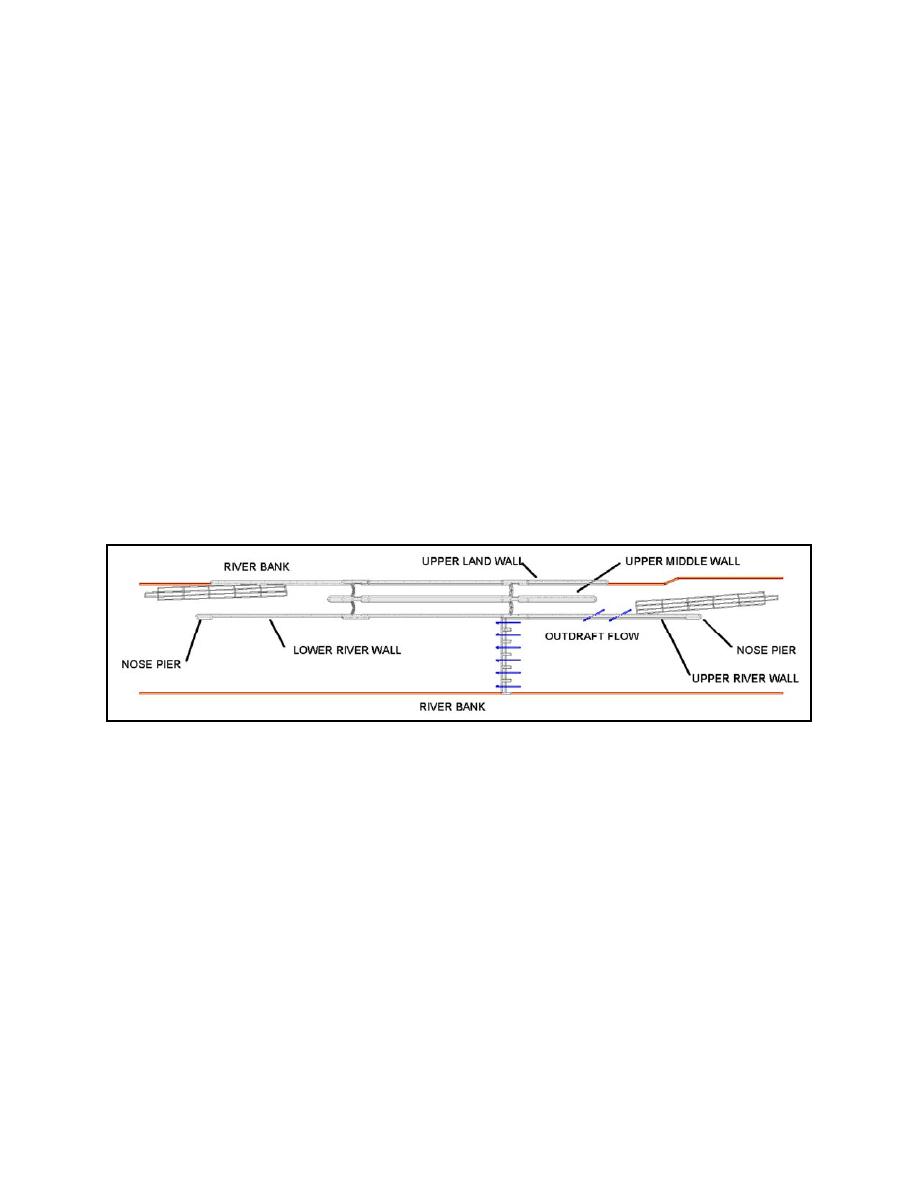
ETL 1110-2-563
30 Sep 04
conditions, the upper guard wall is usually ported (a system of openings designed by hydraulic engineers)
below the impact face to allow flow under the wall. Outdraft conditions or currents (see Figure B-7)
toward the upstream guard wall influence both impact speed and angle in a predictable manner over the
range of flow conditions.
(3) The following fundamental differences influence the design of walls impacted by upbound or
downbound traffic. Downbound traffic is moving with the current whereas up bound traffic is moving
against river current. Towboats usually have more control moving upstream against the current than
moving downstream with the current. The disparity in load conditions for upstream and downstream walls
becomes more pronounced as flood conditions are encountered.
(4) Usual impact forces are based on typical river conditions and assume a controlled landing against
the wall with a typical barge configuration. The usual load reflects typical operating conditions. Unusual
impact forces may occur prior to navigation shutdown prior to a flood event, when fully loaded barges
attempt a lockage in fast river currents. They may also occur when approach conditions are exacerbated
by outdraft currents in the upper approach. The vessel will usually be traveling at a greater velocity and
may impact the approach walls at larger angles during these conditions, resulting in higher impact forces.
The conditions associated with extreme impact forces are highly unpredictable and difficult to establish.
Extreme events can occur when a towboat pushing a barge train loses power under normal conditions.
They can also occur during a flood event when navigation has shut down and barges break away from
moorings and float out of control downstream. Hydraulic modeling should be used to investigate various
scenarios to gain insight and data for design.
Figure B-7. Site constraints for a typical lock structure
c. Data requirements.
(1) Barge train size. The dimensions of lock chambers are typically based on the sizes of barge trains
that will use the lock. The most common barge on the inland waterway is the jumbo barge, which is 11 m
(35 ft) in width and 59 m (195 ft) in length. Typical configurations are generally three wide by five long
(32 m (105 ft) wide by 358 m (1,175 ft) long, including 61 m (200 ft) for the towboat) or three wide by
three long (32 m (105 ft) wide by 239 m (785 ft) long, including 61 m (200 ft) for the towboat). On some
rivers, the standard barge is generally 8 m (27 ft) in width and 53 m (175 ft) in length. There are older
barges in service that are 7 m (24 ft) wide; however, these barges are slowly being removed from service.
Another type of barge is the double-hulled oil, gas, and chemical barge. These barges are typically 15 to
16 m (52 to 54 ft) in width and 61 to 91 m (200 to 300 ft) in length, and travel the river in a one-wide by
two-long or a two-wide by two-long configuration, depending on the river system.
B-7


 Previous Page
Previous Page
